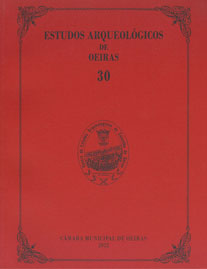The bell beaker potteries of the chalcolithic fortification of Leceia (Oeiras, Portugal): petrographic study, analysis of origins and tempers
Keywords:
Bell beaker ceramic, Portugal, thin section, origins of clays, grogAbstract
Leceia is a large fortified chalcolithic site located west of Lisbon, in the municipality of Oeiras. It was excavated from 1983 to 2002 by J. L. Cardoso. The excavation revealed the existence of a Bell Beaker occupation with two huts located outside the fortification and with na occupation inside the walled area.
Twenty-five Bell Beaker vases were subjected to thin section analysis. Of these, half come from the oldest domestic FM unit, two from the newer EN hut and the others come from inside the fortification.
The results of the analyses indicate the exploitation of a large number of clays that can be grouped into two main families: clays of plutonic origin and clays of sedimentary origin. The distances from the places of exploitation range from a few kilometers to several tens of kilometers, which indicates the circulation of people over a vast geographical area. The series does not show any difference from a chronological point of view, nor from the typology of the ceramics. Finally, one third of the pastes contain grog, a classic temper for Bell Beaker ceramics in Western Europe.
Downloads
Published
How to Cite
Issue
Section
License
Os artigos publicados são da exclusiva responsabilidade dos Autores.
É expressamente proibida a reprodução de quaisquer imagens sobre as quais
existam direitos de autor sem o prévio consentimento dos signatários dos artigos
respectivos.




